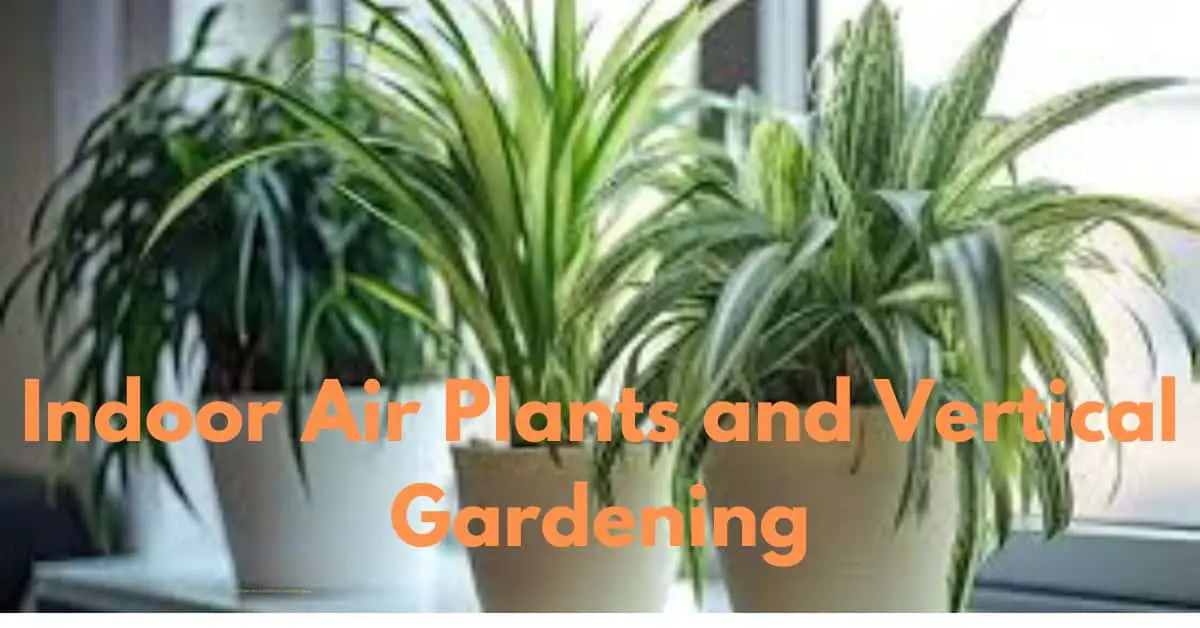Indoor Air Plants and Vertical Gardening: Fresh Ideas for Your Space
If you’re looking to bring nature indoors with minimal fuss, indoor air plants and vertical gardening might just be the perfect solution. Air plants, also known as Tillandsia, are incredibly low-maintenance and don’t even need soil to thrive. Pairing these with a vertical gardening approach not only maximizes space but also adds a modern, green touch to your home. In this blog post, we’ll explore what makes air plants so unique, discuss vertical gardening ideas, and share practical tips for creating a thriving indoor green oasis
Table of Contents
Why Choose Indoor Air Plants?
Air plants are unlike most houseplants; they absorb water and nutrients through their leaves rather than roots, which makes them incredibly versatile for creative arrangements. As epiphytes, they naturally cling to surfaces without needing soil, allowing them to grow in places where other plants might not. Here are a few reasons why indoor air plants make a great choice for any home:
- Easy to Care For
Since air plants don’t require soil, they’re cleaner and easy to care for. All they need is an occasional misting or soak, making them ideal for beginners or people with a busy lifestyle. - Space-Saving
Because they’re compact and can grow in unique places, air plants work well for small spaces. You can place them on shelves, in glass globes, or mount them on walls as part of a vertical garden setup. - Purify the Air
Like many indoor plants, air plants help clean the air. They absorb carbon dioxide and release oxygen, improving indoor air quality and adding a touch of freshness to any room.
I first discovered air plants at a friend’s home and was amazed by their beauty and simplicity. Hanging in small glass globes, they added a unique touch to the room, and I couldn’t resist trying them out in my own space!
What is Vertical Gardening?
Vertical gardening is all about using vertical surfaces to grow plants. This approach makes it possible to create lush greenery even in compact spaces. Whether it’s a dedicated plant wall or a few strategically placed hanging containers, vertical gardening offers endless creative options. This method is especially effective with air plants because they don’t need soil or traditional pots.
Vertical gardening can be as small or extensive as you want; from a single framed plant on the wall to an entire indoor garden in a bright corner. Plus, vertical gardening helps create depth, enhancing any room with an artistic, natural feel.
Best Indoor Air Plants for Vertical Gardening
Not all air plants are the same! While they all share common care needs, their sizes, shapes, and colors vary, making them perfect for different vertical gardening designs. Here are a few popular air plants that work beautifully in indoor vertical gardens:
- Tillandsia Ionantha
This air plant is known for its compact, bushy form and beautiful pink and purple colors during its bloom phase. It’s small enough to fit in wall-mounted displays and looks great in groups. - Tillandsia Xerographica
Often called the “King of Air Plants,” this species has a large rosette shape with curly leaves, making it a statement piece. It’s perfect for a focal point in a vertical garden arrangement. - Tillandsia Bulbosa
With its twisted, spindly leaves, this plant adds a quirky look to any garden. Its unique shape makes it ideal for adding texture and variety to a vertical display. - Tillandsia Caput-Medusae
Aptly named after Medusa’s wild hair, this plant has twisting, tentacle-like leaves. It’s an eye-catching addition to any indoor garden and fits well in both small displays and larger setups. - Tillandsia Aeranthos
This air plant is fast-growing and produces lovely pink and blue flowers. Its elongated shape makes it perfect for framing or hanging as part of a larger vertical garden.
Personal Tip: I started with Tillandsia Ionantha because of its small size and easy care. It looked amazing in a glass globe, and over time, I added other species to create a mini hanging display in my living room.
Creative Ideas for Indoor Vertical Gardens with Air Plants
Vertical gardens can transform any room, even with just a few plants. Here are some creative ideas to get you started with indoor air plants:
- Wall Frames
Create a living wall frame by arranging air plants in a shadow box or on a wooden frame. Attach plants with non-toxic glue or string, making sure to allow enough space for air circulation. The result is a beautiful, self-sustaining piece of art that adds a unique flair to your wall. - Hanging Globes
Glass globes are a popular choice for displaying air plants. You can hang several at different heights for a layered look. This type of arrangement works well in living rooms, bedrooms, or even bathrooms with indirect natural light. - Magnetic Planters
Magnetic air plant holders are great for kitchen refrigerators, metal shelves, or office cabinets. They add a little green to unexpected places and can be easily moved around as needed. - Vertical Garden Racks
A wall-mounted rack can hold multiple air plants in a compact space. This is perfect if you want to display a collection of plants in a smaller area, like a hallway or kitchen wall. - Wooden Log Display
Mount air plants on a piece of driftwood or a wooden log for a rustic touch. These displays bring a natural element indoors and work well in any room with enough light.
Personal Tip: I created a small wall frame with Tillandsia Aeranthos and Tillandsia Bulbosa, placing it near my entryway. It’s a conversation starter and gives guests a refreshing welcome right when they step in!
Caring for Indoor Air Plants in a Vertical Garden
Air plants are low-maintenance, but they still need a bit of TLC. Here are some care tips to keep them looking their best:
- Watering
Air plants absorb moisture through their leaves. Soak them in water for about 20–30 minutes every one to two weeks. If the plants are in a very dry environment, mist them in between soaks. Always shake off excess water to prevent rot, especially if they’re displayed in a confined space like a globe. - Lighting
Air plants need bright, indirect light to thrive. Place your vertical garden near a window with filtered light or use a grow light if natural light is limited. Avoid direct sunlight, which can scorch the leaves. - Air Circulation
Good airflow is crucial for air plants to stay healthy. If they’re in a closed container, make sure to take them out occasionally for some fresh air. - Temperature
Air plants do best in temperatures between 50–90°F (10–32°C). They’re relatively hardy, but try to keep them away from cold drafts or heat sources like radiators. - Fertilizing
Air plants benefit from a diluted, water-soluble fertilizer once a month, especially during the growing season. Use a fertilizer specifically for bromeliads or air plants and avoid over-fertilizing.
Personal Tip: I set a reminder on my phone to soak my air plants every Sunday morning. This little routine helps keep my vertical garden lush and happy without forgetting their needs.
Final Thoughts on Indoor Air Plants and Vertical Gardening
Creating an indoor vertical garden with air plants is a fantastic way to bring nature into your home without a lot of fuss. Air plants add a touch of green and can thrive in places other plants can’t, making them perfect for unique and compact displays. From hanging globes to rustic frames, there are countless ways to showcase your indoor air plants creatively.
Whether you’re a seasoned plant parent or just starting, air plants and vertical gardening offer an enjoyable, low-maintenance way to make your space feel fresh and alive. Start small, experiment with different layouts, and find a style that suits your home. With a bit of care and creativity, your indoor vertical garden can flourish and bring you joy for years to come. Happy gardening!










